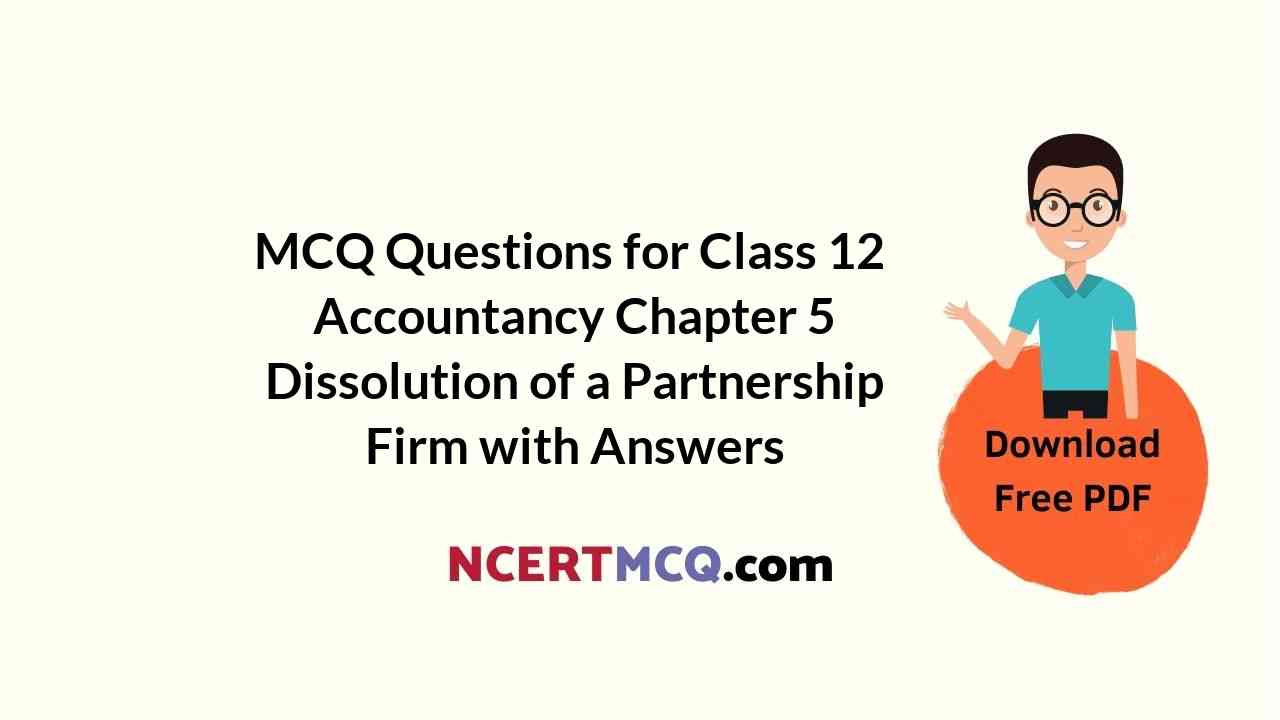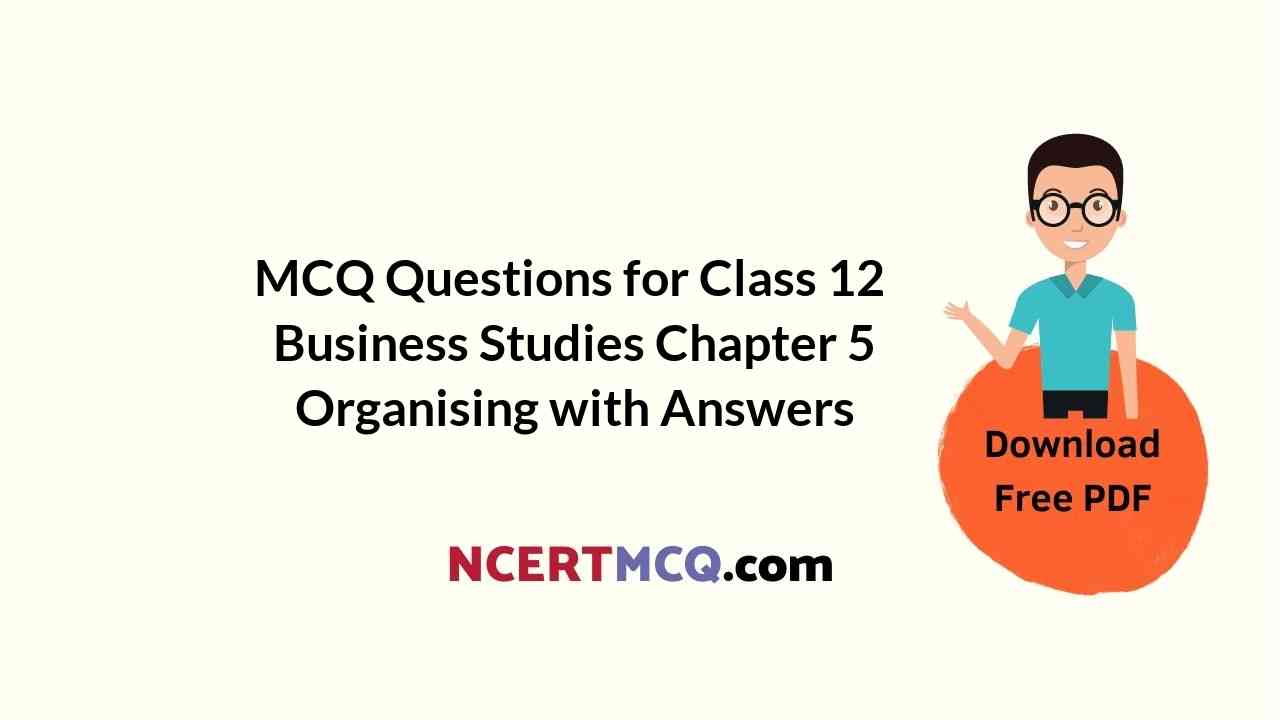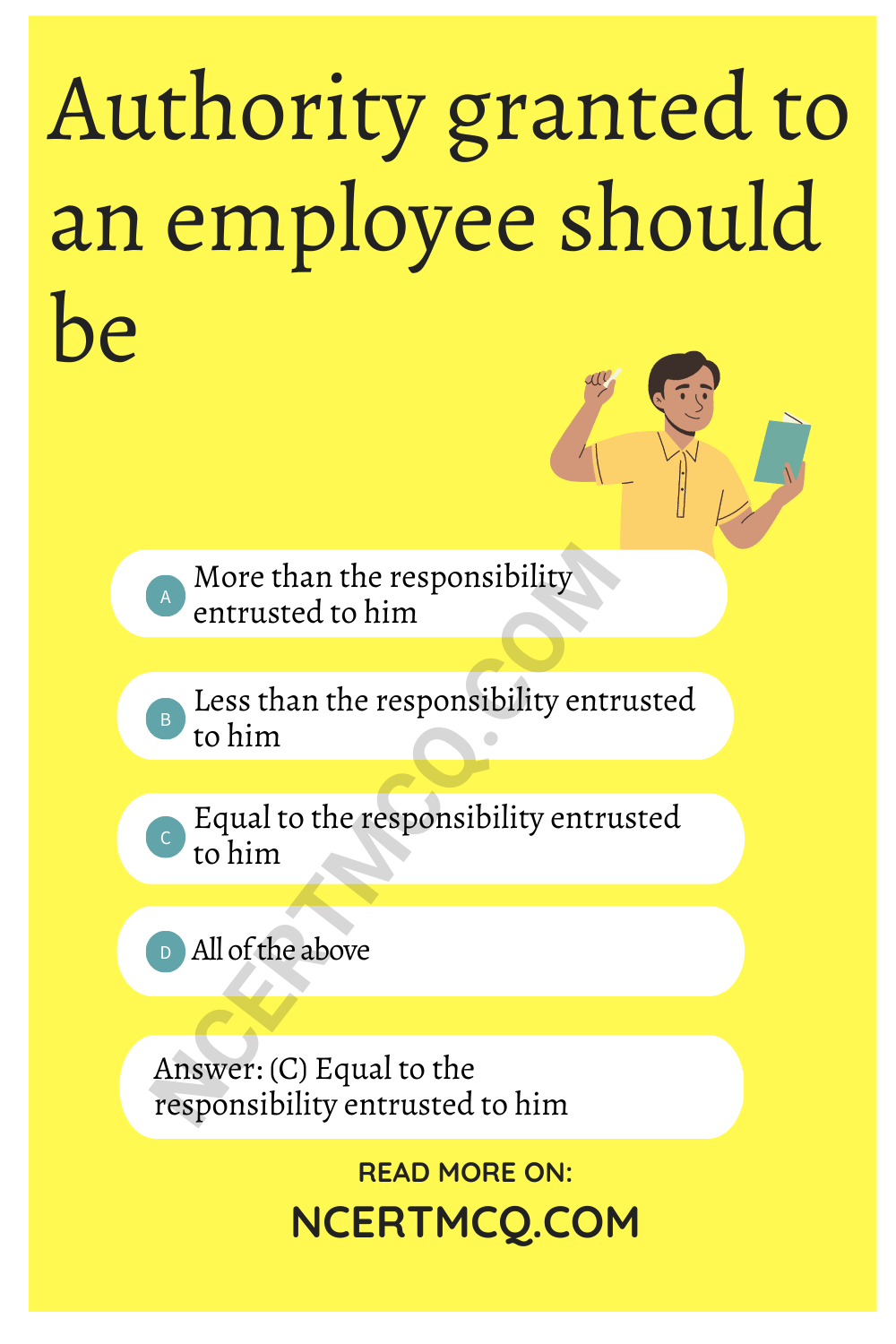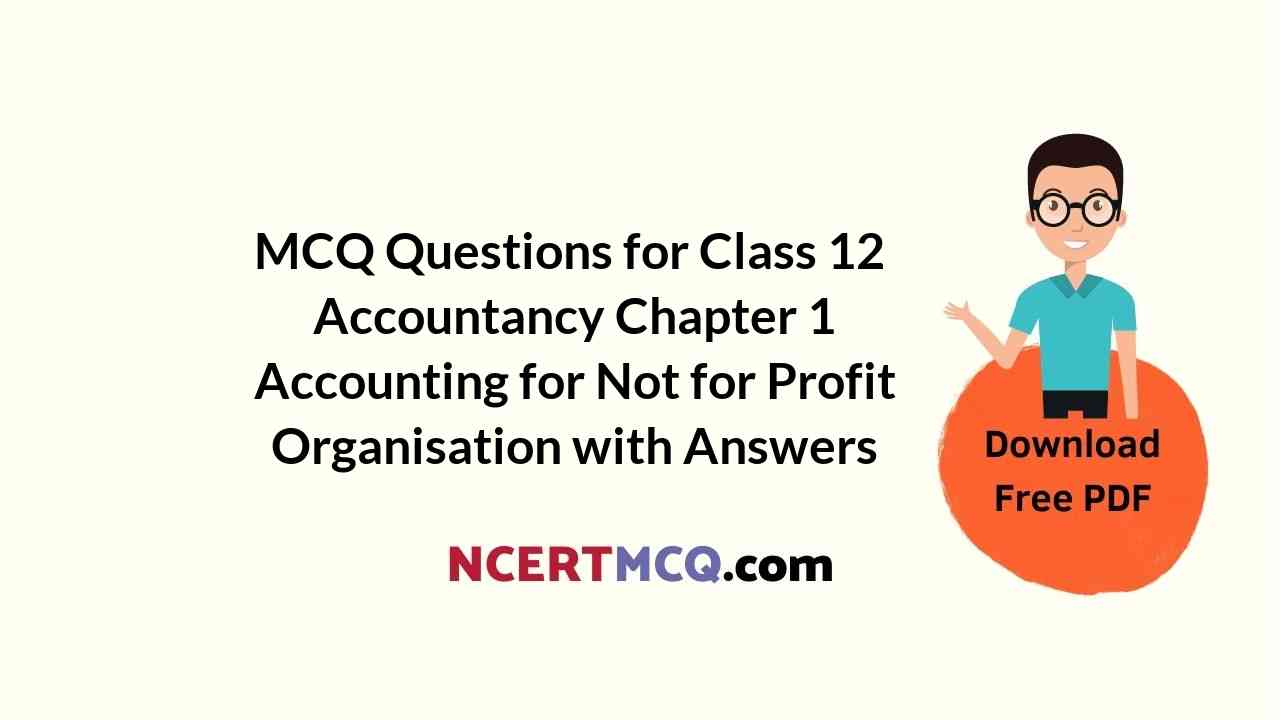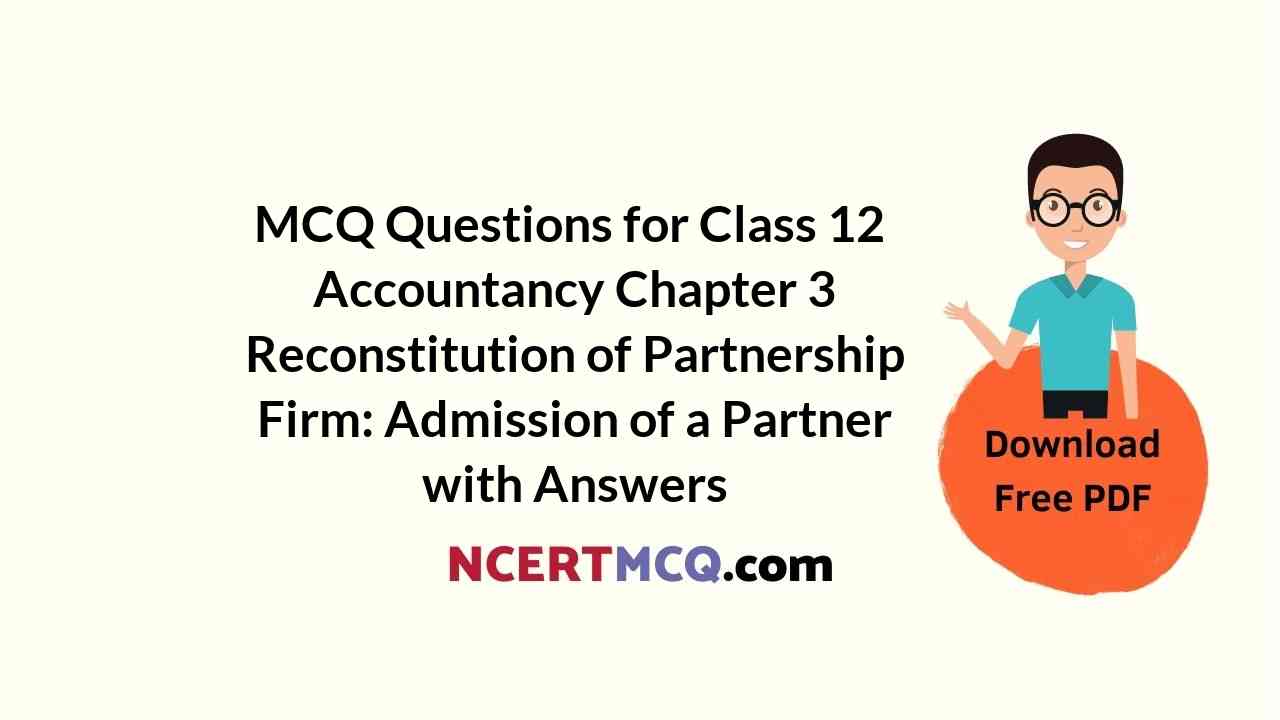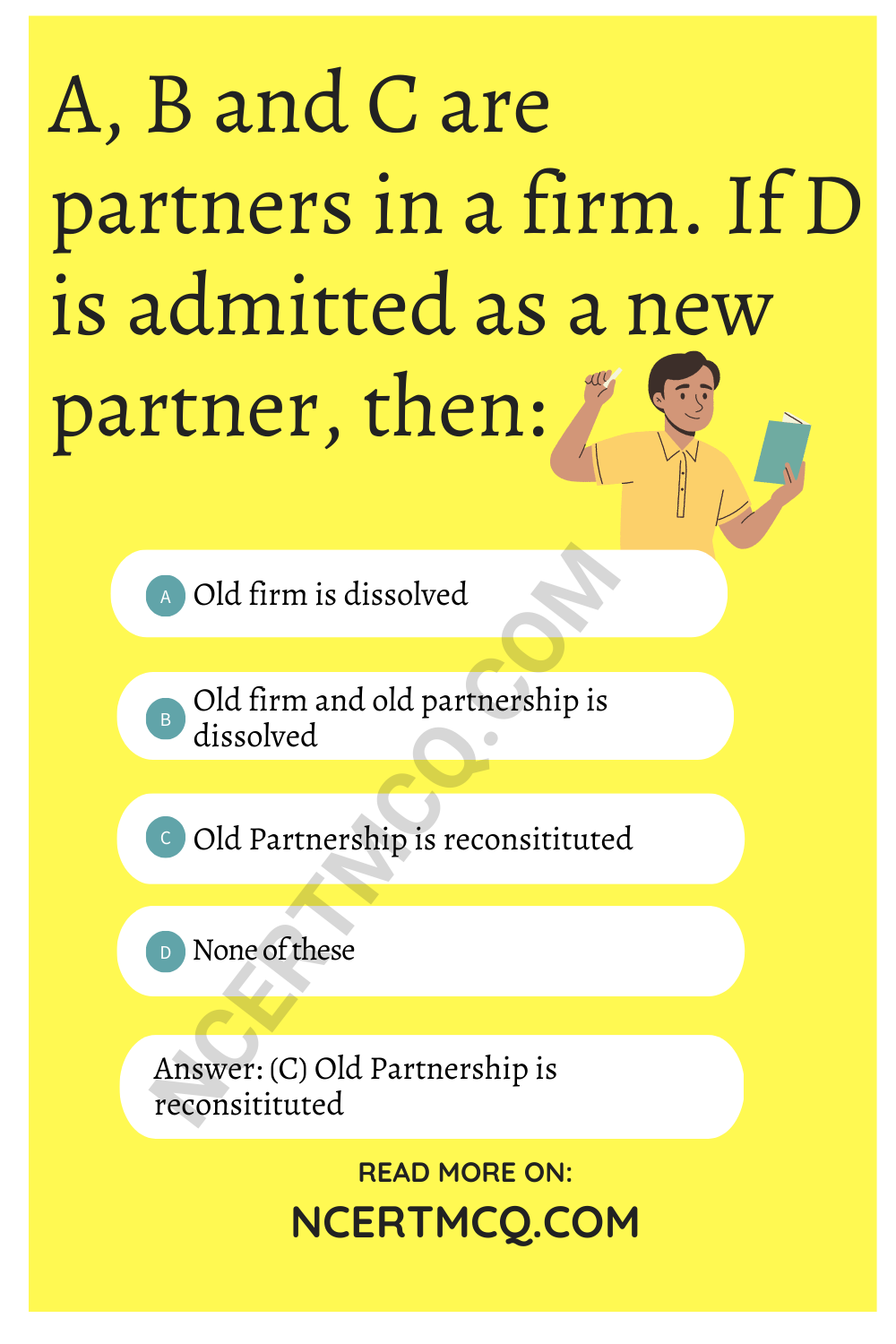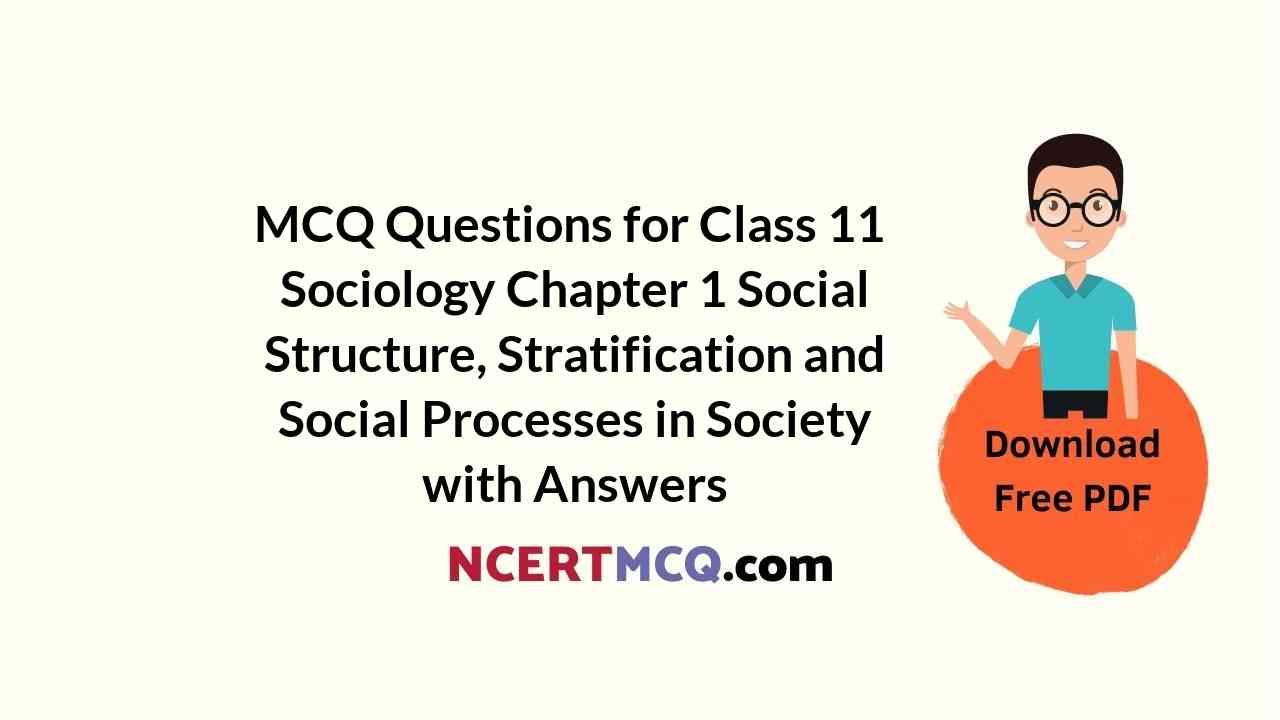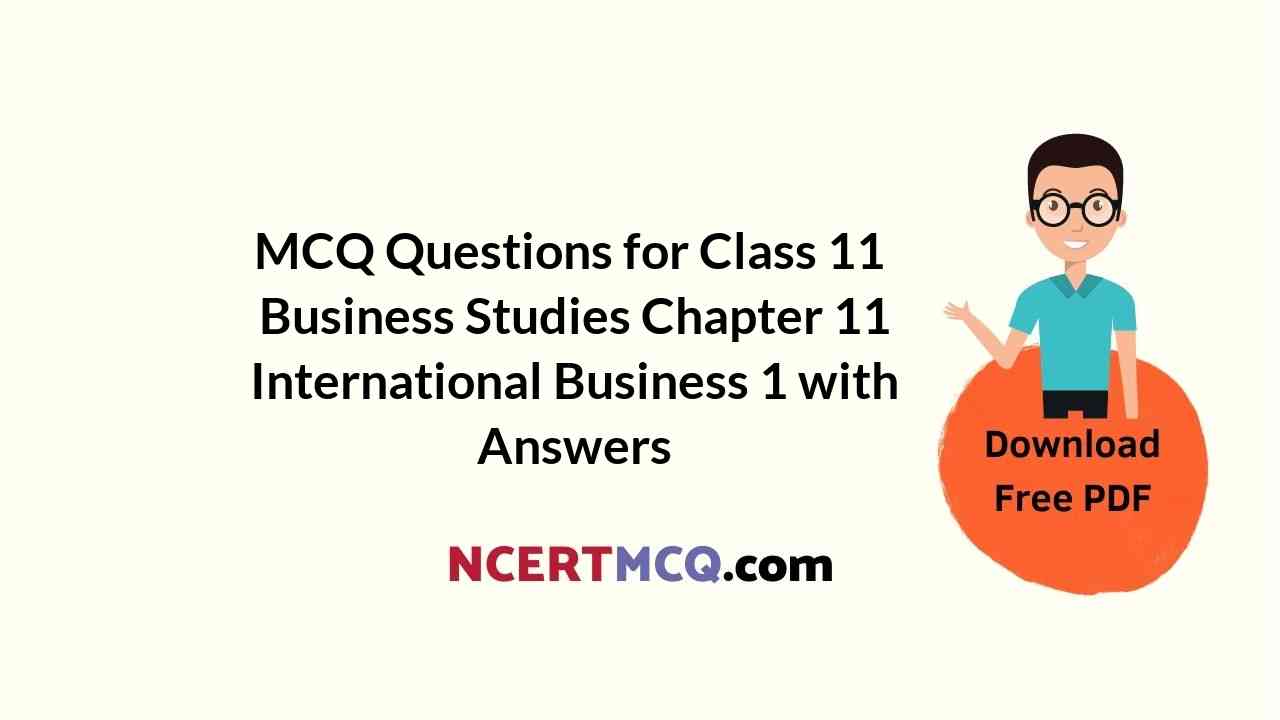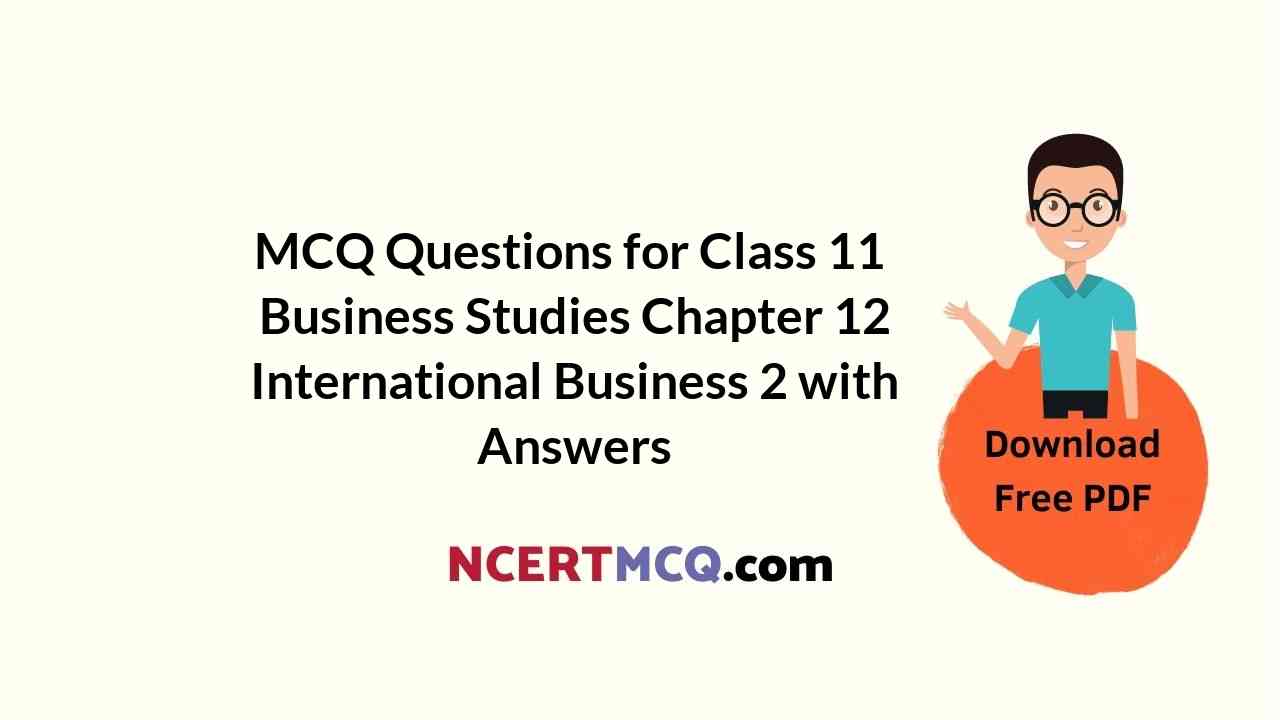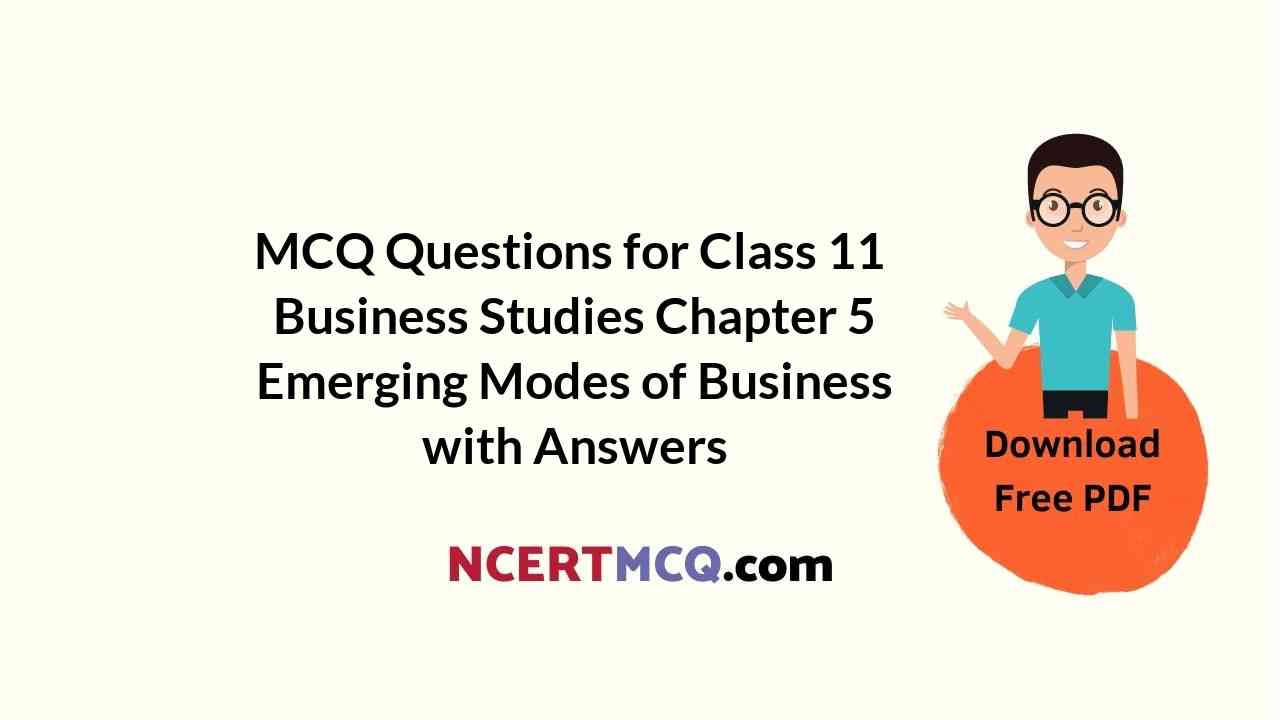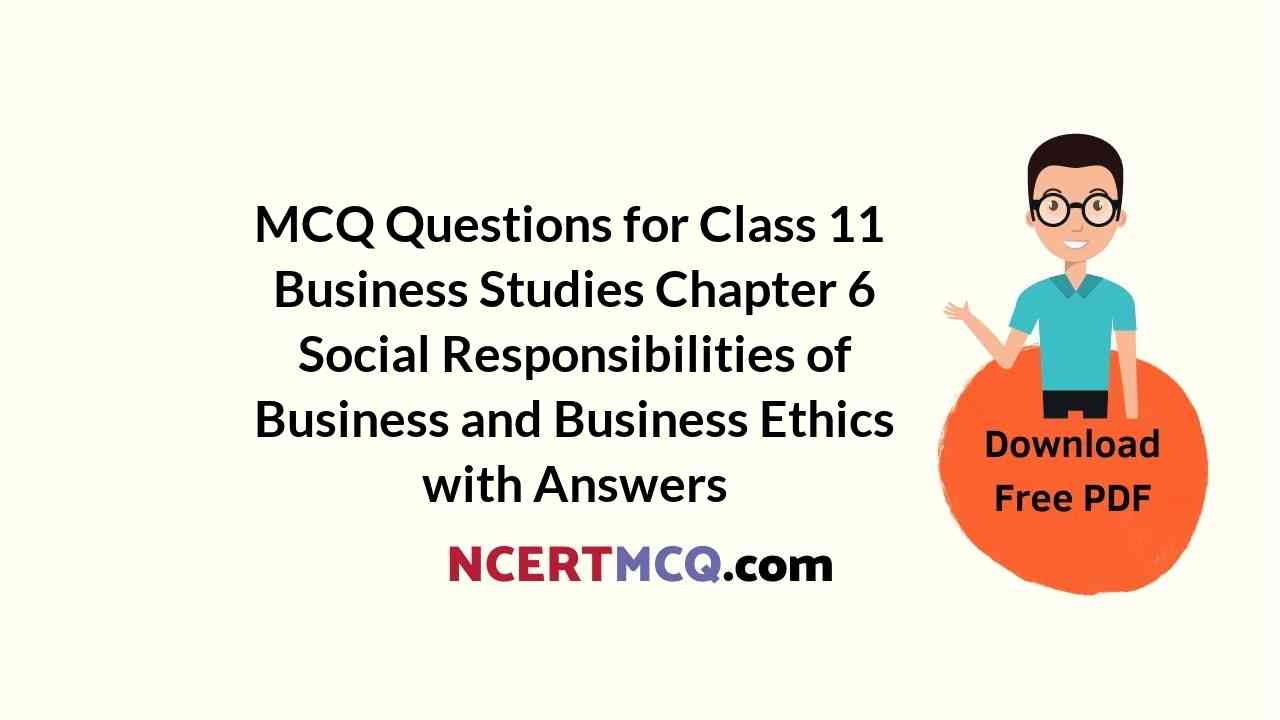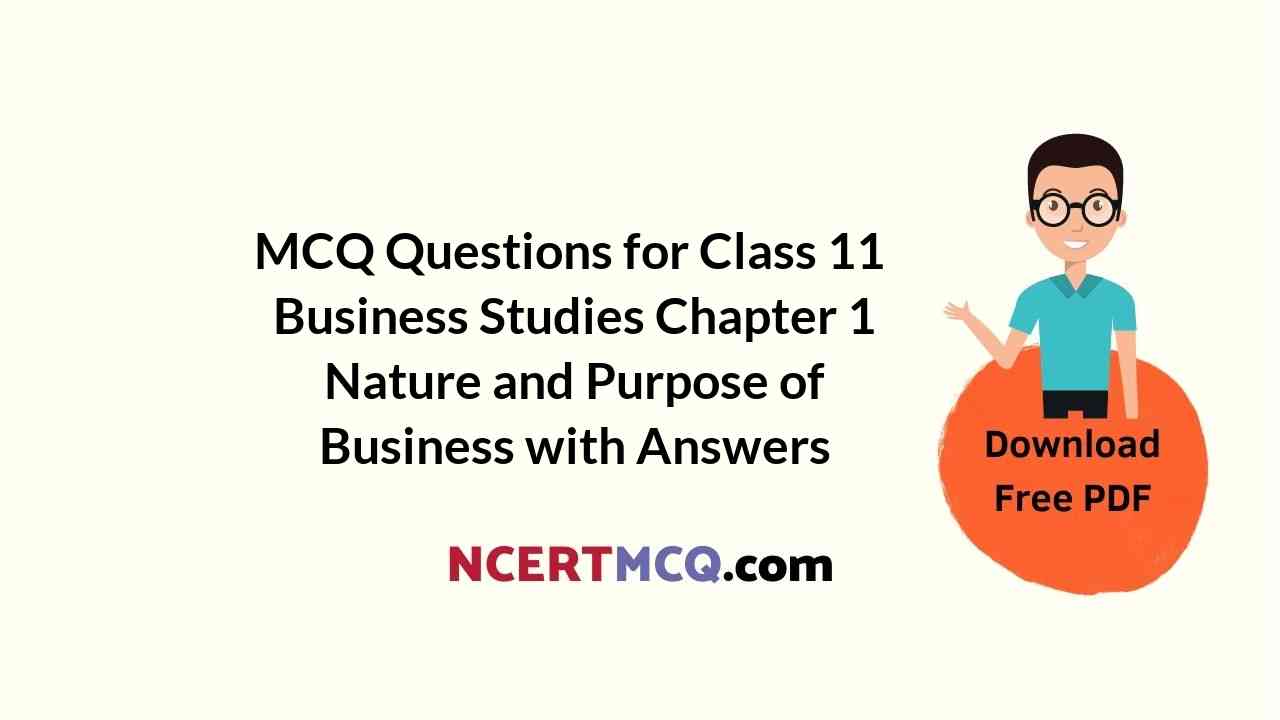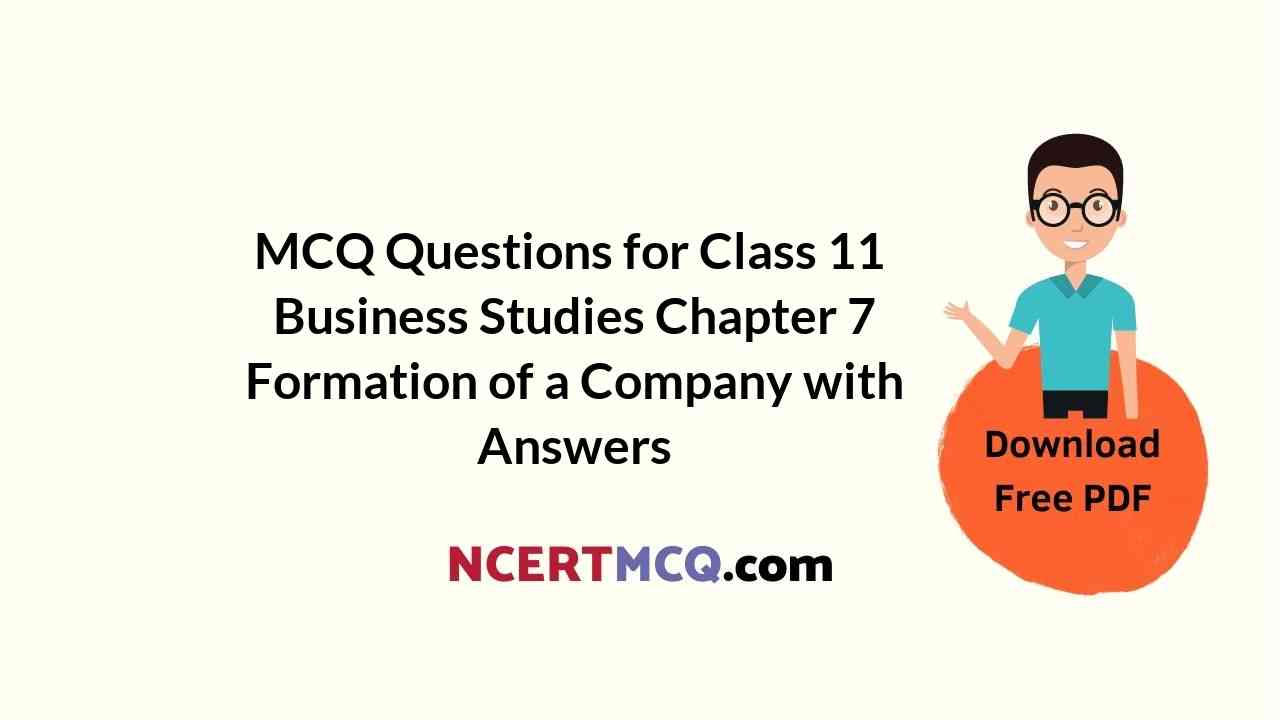Check the below NCERT MCQ Questions for Class 12 Accountancy Chapter 5 Dissolution of a Partnership Firm with Answers Pdf free download. MCQ Questions for Class 12 Accountancy with Answers were prepared based on the latest exam pattern. We have provided Dissolution of a Partnership Firm Class 12 Accountancy MCQs Questions with Answers to help students understand the concept very well.
Class 12 Accountancy Chapter 5 Dissolution of a Partnership Firm MCQ With Answers
Accountancy Class 12 Chapter 5 MCQs On Dissolution of a Partnership Firm
Capital Account Is Related To MCQ Class 12 Question 1.
In the event of dissolution of partnership firm, the provision for doubtful debts is transferred to :
(a) Realisation Account
(b) Partners’ Capital Accounts
(c) Sundry Debtors Account
(d) None of the above
Answer
Answer: (a) Realisation Account
MCQ On Dissolution Of Partnership Firm Class 12 Question 2.
On dissolution, if a partner undertakes to make payment of a liability of the firm, the account to be debited is:
(a) profit & Loss Account
(b) Realisation Account
(c) Partner’s Capital Account
(d) Cash Account
Answer
Answer: (b) Realisation Account
Dissolution Of Partnership Firm MCQ Class 12 Question 3.
At the dime of firm’s dissolution, Balance of General Reserve shown in the Balance Sheet is credited to :
(a) Realisation Account
(b) Creditors’ Account
(c) Partners’ Capital Accounts
(d) Profit & Loss Account
Answer
Answer: (c) Partners’ Capital Accounts
MCQs On Dissolution Of Partnership Firm Class 12 Question 4.
On dissolution, goodwill account is transferred to :
(a) In the Capital Accounts of Partners
(b) In the Credit of Cash Accounts
(c) In the Debit of Realisation Account
(d) In the Credit of Realisation Account
Answer
Answer: (c) In the Debit of Realisation Account
On The Dissolution Of The Partnership MCQ Class 12 Question 5.
At the time of dissolution of partnership firm, fictitions assets are transferred to :
(a) Capital Accounts of Partners
(b) Realisation Account
(c) Cash Account
(d) Partners’ Loan Account
Answer
Answer: (a) Capital Accounts of Partners
Question 6.
On dissolution of a firm, a partner paid 1,500 Rs. for firm’s realisation expenses. Which account will be debited ?
(a) Cash Account
(b) Realisation Account
(c) Capital Account of the Partner
(d) Profit & Loss A/c
Answer
Answer: (b) Realisation Account
Question 7.
On taking responsibility of payment of realisation expenses by a partner, the account credited will be :
(a) Realisastion Account
(b) Cash Account
(c) Capital Account of the Partner
(d) None of the above
Answer
Answer: (c) Capital Account of the Partner
Question 8.
When realisation expenses are paid by the firm on behalf of a partner, such expenses are debited to :
(a) Realisation Account
(b) Partners’ Capital Account
(c) Partner’s Loan Account
(d) None of these
Answer
Answer: (b) Partners’ Capital Account

Question 9.
Which of the following is transferred to Realisation Account ?
(a) Balance of Profit Account
(b) Balance of Profit & Loss Account
(c) Amount realised on sale of assets
(d) Reserves
Answer
Answer: (c) Amount realised on sale of assets
Question 10.
On disolution of firm, loss calculated in realisation account is debited/credited to which account ?
(a) Cash Account
(b) Partners’ Capital Accounts
(c) Realisation Account
(d) None of these
Answer
Answer: (b) Partners’ Capital Accounts
Question 11.
Which of the following is not transferred to Realisatsion Account ?
(a) Balance of Cash Account
(b) Balance of Reserves
(c) Balance of Profit & Loss Account
(d) All of the above
Answer
Answer: (d) All of the above
Question 12.
On taking responsibility of payment of a liability of ₹ 20,000 by a partner, the account credited will be :
(a) Realisation Account
(b) Cash Account
(c) Capital Account of the Partner
(d) Liability Account
Answer
Answer: (c) Capital Account of the Partner
Question 13.
Cash balance shown in the Balance Sheet is shown on dissolution of firm in :
(a) Realisation Account
(b) Cash Account
(c) Capital Account
(d) None of the Account
Answer
Answer: (b) Cash Account
Question 14.
There was an Unrecorded asset of ₹ 12,000 which was taken over by a partner at ₹ 10,500. Partner’s Capital Account will be debited by…….
(a) ₹ 12,000
(b) ₹ 10,500
(c) ₹ 1,500
(d) ₹ 32,500
Answer
Answer: (b) ₹ 10,500
Question 15.
On dissolution of a firm, Bank overdraft is transferred to:
(a) Cash Account
(b) Bank Account
(c) Realisation Account
(d) Partners’ Capital Account
Answer
Answer: (c) Realisation Account
Question 16.
On dissolution of a firm, Partner’s Loan Account is transferred to:
(a) Realisation Account
(b) Partner’s Capital Account
(c) Partner’s Current Account
(d) None of these
Answer
Answer: (d) None of these
Question 17.
The accumulated profits and reserves are transferred to:
(a) Realisation Accounts
(b) Partners’ Capital Accounts
(c) Bank Account
(d) None of these
Answer
Answer: (b) Partners’ Capital Accounts
Question 18.
On dissolution, Goodwill Account is transferred to :
(a) In the Capital Accounts of Partners
(b) On the Credit side of Cash Account
(c) On the Debit side of Realisation Account
(d) On the Credit side of Realisation Account
Answer
Answer: (c) On the Debit side of Realisation Account
Question 19.
On dissolution, when a partner takes over an asset……….is debited :
(a) Realisation Account
(b) Partner’s Capital Account
(c) Cash Account
(d) Asset Account
Answer
Answer: (b) Partner’s Capital Account
Question 20.
After transferring liabilities like creditors and bills payable in the Realisation Account in the absence of any informations regarding their payment, such liabilities are treated as :
(a) Never paid
(b) Fully paid
(c) Partly paid
(d) None of these
Answer
Answer: (b) Fully paid
Question 21.
Unrecorded liabilities when paid are shown in :
(a) Debit side of Realisation Account
(b) Debit side of Bank Account
(c) Credit side of Realisation Account
(d) Credit side of Bank Account
Answer
Answer: (a) Debit side of Realisation Account
Question 22.
Payment of credit balance of Partners’ Capital Accounts at the time of dissolution of a firm is made to:
(a) Partners
(b) Firm
(c) Wife
(d) None of these
Answer
Answer: (a) Partners
Question 23.
On dissolution of a firm Partner’s Loan A/c is transferred to:
(a) Realisation A/c
(b) Partners’ Capital A/cs
(c) Suspense A/c
(d) None of these
Answer
Answer: (d) None of these
Question 24.
At the time of dissolution of firm book value of assets is recorded in which side of the Realisation Account ?
(a) Debit Side
(b) Credit Side
(c) All of the above
(d) Liabilities Side
Answer
Answer: (a) Debit Side
Question 25.
Realisation expenses are recorded in which side of Realisation A/c:
(a) Liabilities
(b) Assets
(c) Credit
(d) Debit
Answer
Answer: (c) Credit
Question 26.
Realisation Account is a :
(a) Personal A/c
(b) Nominal A/c
(c) Read A/c
(d) None of these
Answer
Answer: (b) Nominal A/c
Question 27.
On dissolution of the firm, Partners’ Capital Accounts are closed through :
(a) Realisation Account
(b) Drawings Account .
(c) Bank Account
(d) Loan Account
Answer
Answer: (c) Bank Account
Question 28.
Unrecorded assets when taken over by a partner are shown in:
(a) Debit side of Realisation A/c
(b) Debit side of Bank A/c
(c) Credit side of Realisation A/c
(d) Credit side of Bank A/c
Answer
Answer: (c) Credit side of Realisation A/c
Question 29.
Expenses on dissolution of firm is called :
(a) Realisation Expenses
(b) Legal Expenses
(c) Loss Expenses
(d) None of these
Answer
Answer: (a) Realisation Expenses
Question 30.
Sundry creditors amounted to ₹ 8,000. They were paid at a discount of 5 %. Realisation A/c will be debited by :
(a) ₹ 8,000
(b) ₹ 7,600
(c) ₹ 400
(d) ₹ 8,400
Answer
Answer: (b) ₹ 7,600
Question 31.
Amount realised from sale of assets is recorded in :
(a) Debit side of Realisation Account
(b) Credit side of Realisation Account
(c) Liabilities side of Balance Sheet
(d) Assets side of Balance Sheet
Answer
Answer: (b) Credit side of Realisation Account
Question 32.
A firm can be voluntarily dissolved by the partners :
(a) On Majority basis
(b) On 3/4 Member’s decision
(c) On 1/2 Member’s decision
(d) None of these
Answer
Answer: (d) None of these
Question 33.
On dissolution of a firm, amount realised from an unrecorded asset is credited to:
(a) partners’ Capital Accounts
(b) Cash Account
(c) Realisation Account
(d) Revaluation Account
Answer
Answer: (c) Realisation Account
Question 34.
Profit/loss on Realisation Account is distributed among partners:
(a) In Profit-sharing Ratio
(b) In Capital Ratio
(c) Equally
(d) None of these
Answer
Answer: (a) In Profit-sharing Ratio
Question 35.
Which of the following is correct profit or loss in case the amount received from the sale of assets is ₹ 50,000, total assets is ₹ 60,000, total liabilities ₹ 20,000 and realisation expenses ₹ 2,000 ?
(a) ₹ 12,000 Loss
(b) ₹ 32,000 Profit
(c) ₹ 30,000 Loss
(d) ₹ 12,000 Profit
Answer
Answer: (a) ₹ 12,000 Loss
Question 36.
What will be the total assets (except cash) of the firm from the following: if Creditor ₹ 15,000, Partner’s loan ₹ 10,000, Partners’ capital ₹ 40,000. Cash in hand ₹ 5,000
(a) ₹ 60,000
(b) ₹ 65,000
(c) ₹ 70,000
(d) ₹ 55,000
Answer
Answer: (b) ₹ 65,000
Question 37.
If the total assets are ₹ 3,25,000 and the total outside liabilities ₹ 45,000 then the amount of all partner’s capital will be:
(a) ₹ 3,70,000
(b) ₹ 2,80,000
(c) ₹ 3,00,000
(d) None of these
Answer
Answer: (b) ₹ 2,80,000
Question 38.
Insolvency of a partner will come under what type of dissolution of a firm ?
(a) Dissolutiuon by Court
(b) Compulsory Dissolution
(c) On happening of certain contingencies
(d) None of these
Answer
Answer: (c) On happening of certain contingencies
Question 39.
On firm’s dissolution, which one of the following account should be prepared at the last ?
(a) Realisation Account
(b) Partner’s Capital Accounts
(c) Cash/Bank Account
(d) Partner’s Loan Account
Answer
Answer: (c) Cash/Bank Account

Question 40.
On dissolution of a firm, realisation account is debited with:
(a) All assets to be realised
(b) All outside liabilities of the firm
(c) Cash received on sale of assets
(d) Any assets taken over by one of the partners
Answer
Answer: (a) All assets to be realised
Question 41.
On dissolution of a firm, out of the proceeds received from the sale of assets will be paid first of all:
(a) Partner’s Capitals
(b) Partner’s Loan to Firm
(c) Partner’s additional capital
(d) Outside Creditors
Answer
Answer: (d) Outside Creditors
We hope the given NCERT MCQ Questions for Class 12 Accountancy Chapter 5 Dissolution of a Partnership Firm with Answers Pdf free download will help you. If you have any queries regarding CBSE Class 12 Accountancy Dissolution of a Partnership Firm MCQs Multiple Choice Questions with Answers, drop a comment below and we will get back to you soon.
Class 12 Accountancy MCQ:
- Accounting for Not for Profit Organisation Class 12
- Accounting for Partnership: Basic Concepts Class 12
- Reconstitution of Partnership Firm: Admission of a Partner Class 12
- Reconstitution of Partnership Firm: Retirement / Death of a Partner Class 12
- Dissolution of a Partnership Firm Class 12
- Accounting for Share Capital Class 12
- Issue and Redemption of Debentures Class 12
- Financial Statements of a Company Class 12
- Analysis of Financial Statements Class 12
- Accounting Ratios Class 12
- Cash Flow Statement Class 12
